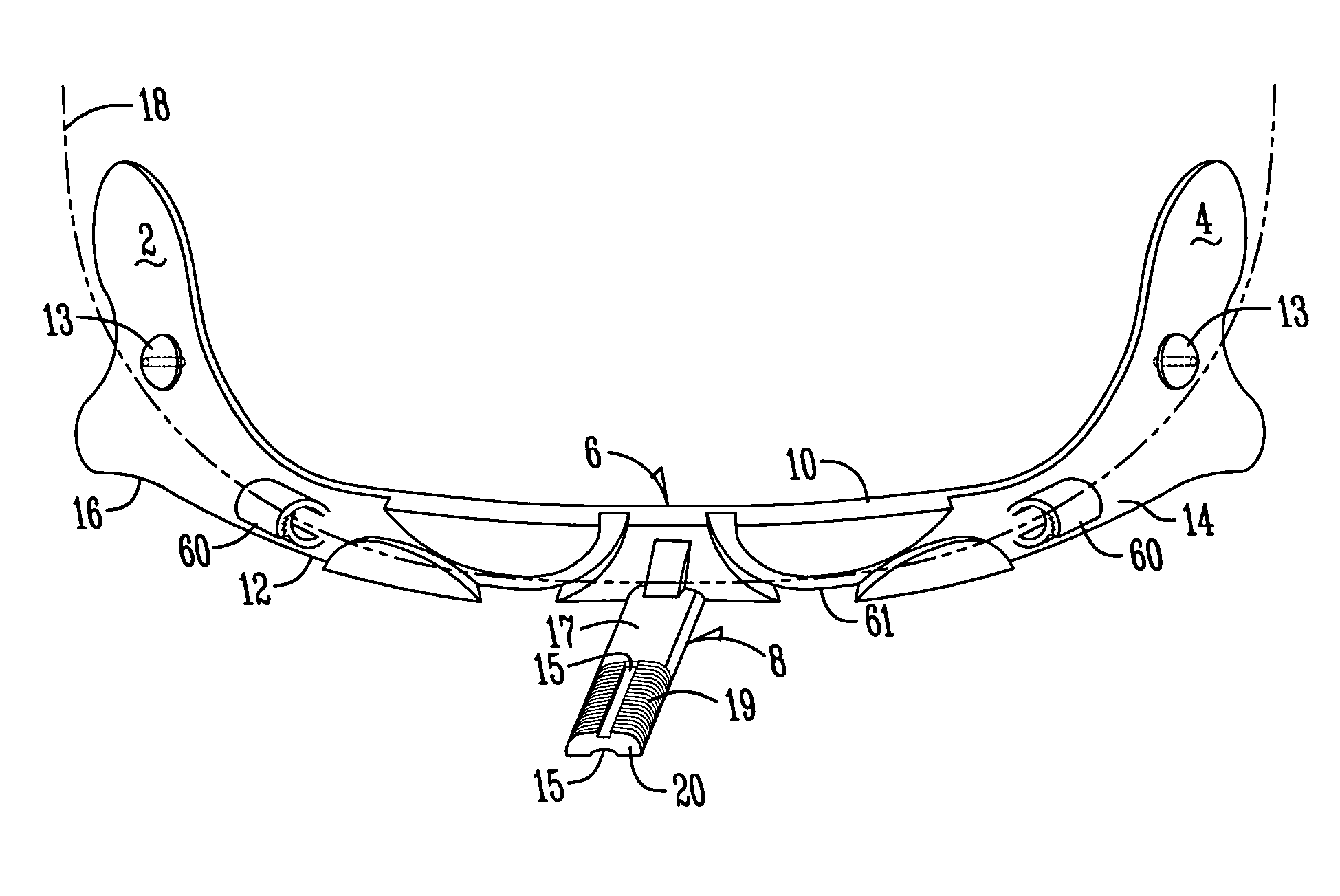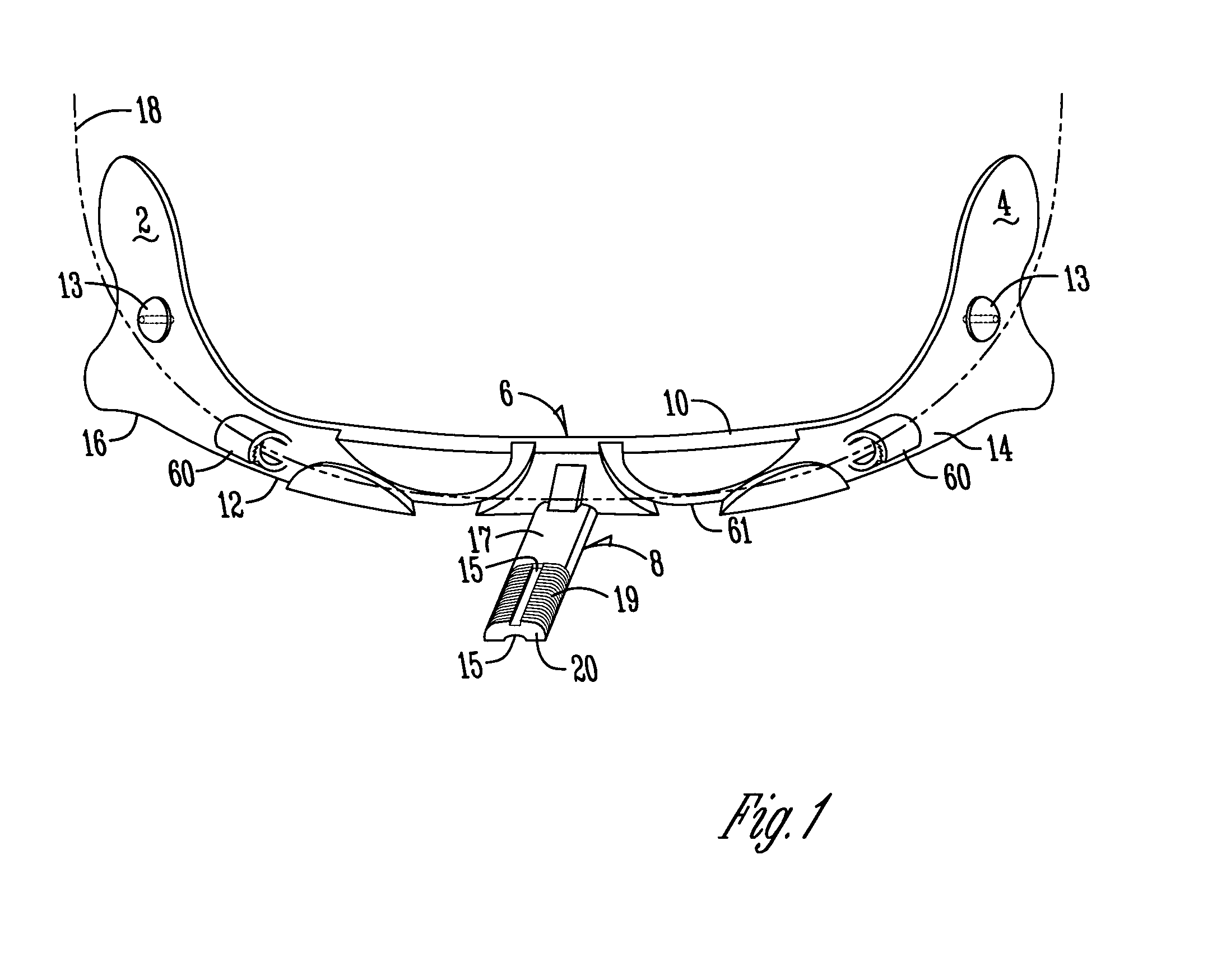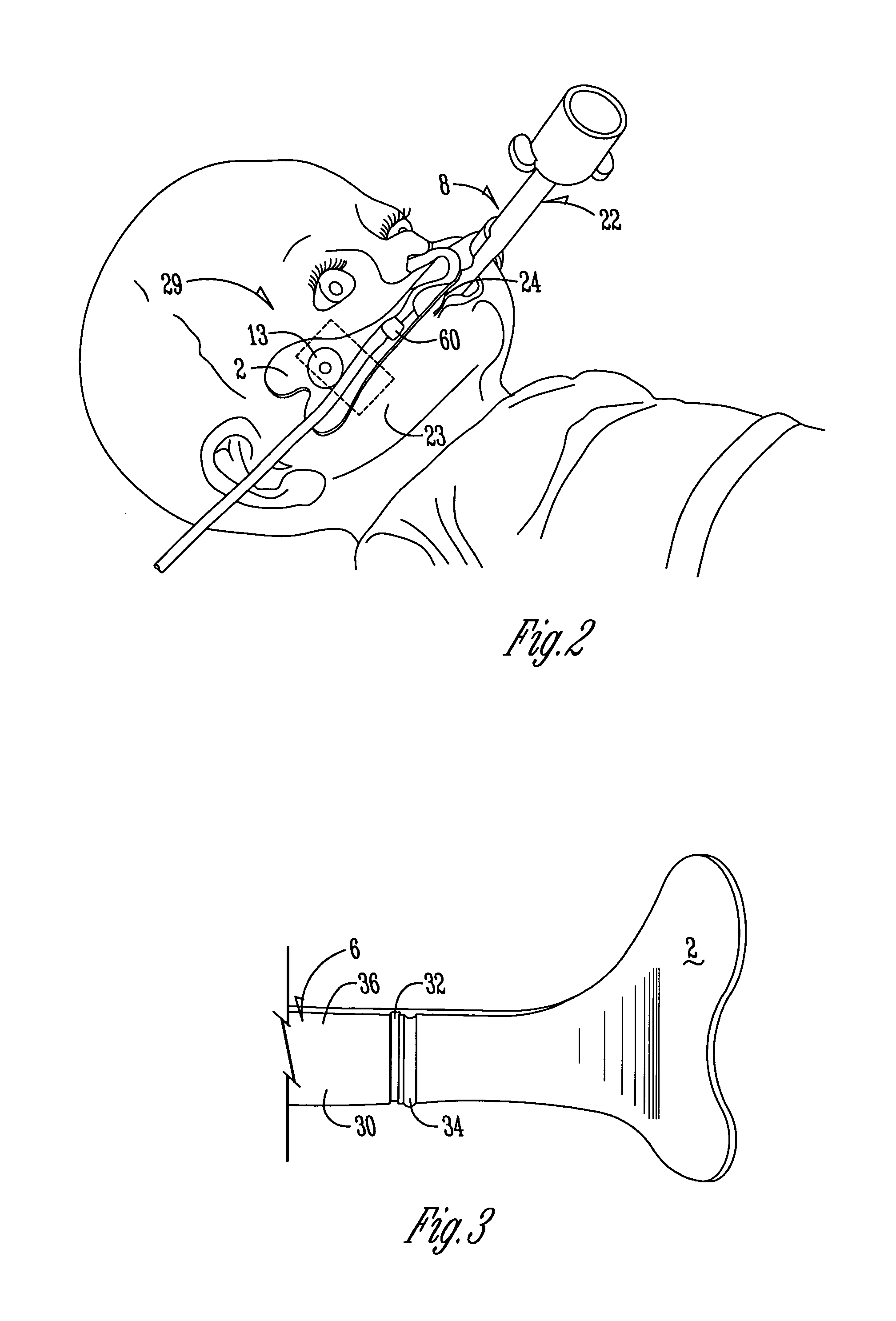Nasal oral respiratory interface
a nasal cavity and nasal tube technology, applied in the direction of respirators, respiratory apparatus, catheters, etc., can solve the problems of allowing the tube to move, poor fixation of adhesive tape, and damage to the larynx, so as to prevent movement or kinking of the tracheal tube, and ensure the attachment of the device, not to negatively affect the growth and development of the oral cavity
- Summary
- Abstract
- Description
- Claims
- Application Information
AI Technical Summary
Benefits of technology
Problems solved by technology
Method used
Image
Examples
Embodiment Construction
[0031]The present invention sets forth a method and an apparatus for stabilizing at least one medical device entering at least one facial cavity. Such medical devices may include, for example, endotracheal tubes, nasotracheal tubes, nasalgastric tubes, naso or orojejunal tubes, nasal thermistors, nasal pneumotachometers, nasal capnographs, nasal masks, oxygen delivery tubing and nasal CPAP delivery systems, although the present invention will stabilize any device entering or covering the mouth or nose. For the purposes of this disclosure, the term “tube” is meant to include all such medical devices entering the mouth or nose, and the present invention is not limited to stabilizing medical devices tubular in shape. Likewise, it should be understood that oral insertion, nasal insertion or both simultaneously will be stabilized equally well.
[0032]As shown in FIG. 1, the present invention comprises a first 2 and second 4 facial interface positioned on opposite terminal ends of a transve...
PUM
 Login to View More
Login to View More Abstract
Description
Claims
Application Information
 Login to View More
Login to View More - R&D
- Intellectual Property
- Life Sciences
- Materials
- Tech Scout
- Unparalleled Data Quality
- Higher Quality Content
- 60% Fewer Hallucinations
Browse by: Latest US Patents, China's latest patents, Technical Efficacy Thesaurus, Application Domain, Technology Topic, Popular Technical Reports.
© 2025 PatSnap. All rights reserved.Legal|Privacy policy|Modern Slavery Act Transparency Statement|Sitemap|About US| Contact US: help@patsnap.com



